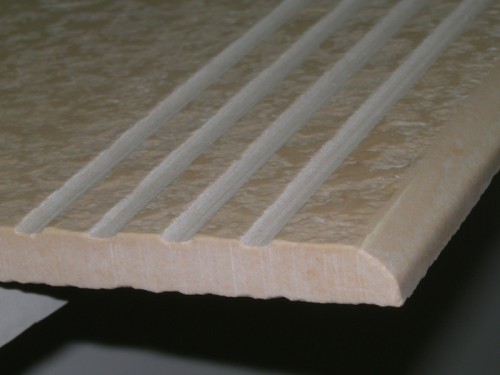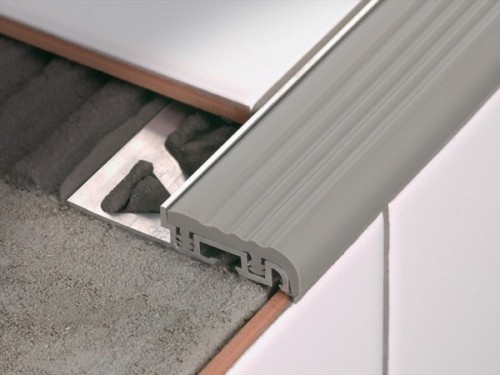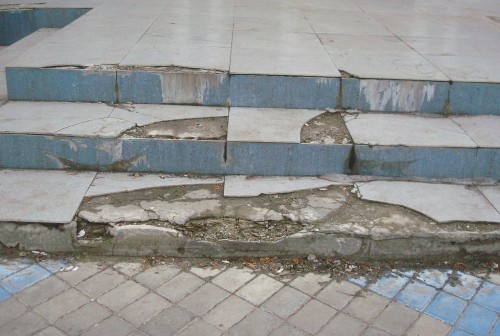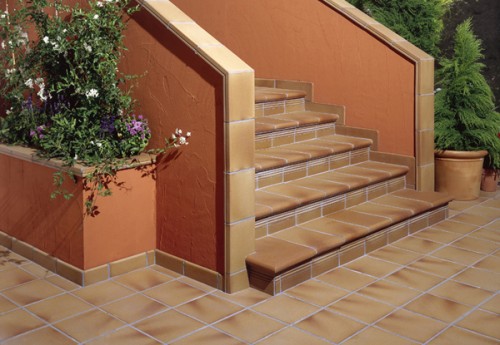
Facing stairs to a stonewater Ladder
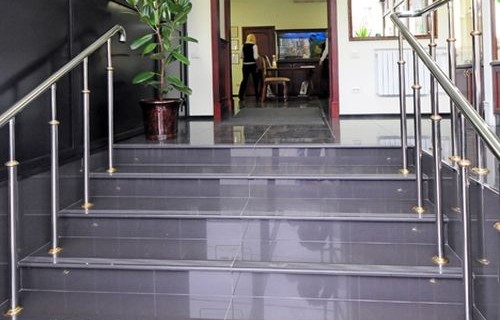
The staircase needs a reliable coating capable of withstanding permanent loads. It is necessary to choose such a material that for a long time will not require updates and repair. Porcelain stoneware complies with the requirements for stairs to decorate the stairs.
Content
Selection of porcelain stoneware
When choosing a material, there are two options - ready-made monolithic steps or porcelain tiles.
1. If the staircase has standard dimensions - the height of the step is 15 cm, width 30, length 120-160 cm, it is convenient to use ready-made steps. Such steps have rounded ends and notches that protect against slipping.
2. Length of monolithic steps 120, 130, 160 cm, 180; Width 30 cm. Stages are sold both separately and complete with a rider. The edge of the stage can be straight, curly or with a cornice. The addition to the kit is the plinth and eaves, which is used in the case when the edge of the straight line. 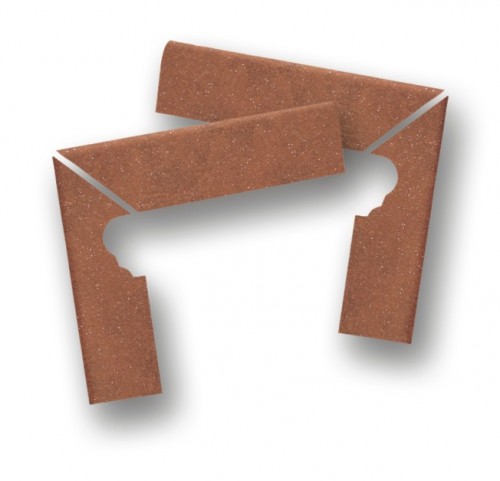
3. The kit necessary for the device of one step is expensive. The option of saving funds is to use a monolithic stage, and the approaches to arrange with another material - a porcelain tile, mosaic, and a seven.
4. The use of monolithic steps allows you to perform a reliable beautiful coating without seams. 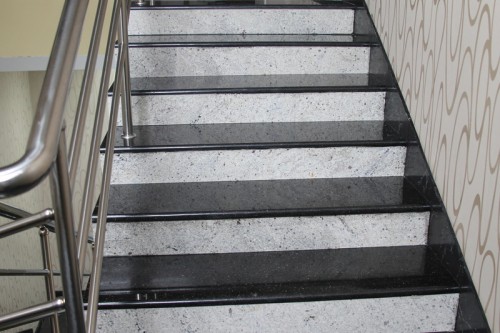
5. For facing non-standard curvilinear or fan-shaped stairs, tile from porcelain stoneware is used. Tile thickness should be at least 12 mm.
Convenient in the work of the tile with a side or cornice. When working with such a tile, the use of the profile is not required. 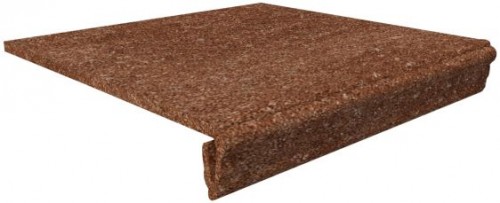
6. Tile with a smooth edge needs an addition to the profile. A non-removable angular profile is mounted in the process of laying tiles. Removable profile is fastened after facing the stairs and grout seams.
7. You can pick up the optimal size tile. For stairs, tile with different edge design options are available. Tile trim use for plinth design.
8. When choosing a tile sizes, draw the scheme of its location on the steps. In the center of the stage can be the middle of the tiles or seam between the tiles. Choose such dimensions so that you can do without trimming the porcelain stoneware on the horizontal surface.
9. To finish the stairs, it is better to use structured relief porcelain stoneware. Material with a polished surface is not enough for these purposes.
10. In order not to have unpleasant surprises and the material did not have to change, carefully check the party number when buying. A different shade of steps will spoil the general view of the stairs.
Surface preparation
1. The base stages should not have deviations from the horizontal. If the steps are narrow, it is not necessary to increase their width with tiled glue - it will take the design. In this case, you should arrange a wooden formwork and pour the steps with a mixture of fine-caliber clay, sand and rubble. In the same way, the surface of the brick staircase is aligned. 
2. Facing the wooden staircase with a porcelain stoneware is not allowed. Some experts recommend using elastic glue or add plasticizer into it. It will not save the situation. The design of the wooden staircase may not withstand the load that the stacked stairs gives a strain. Wooden steps do not have sufficient stiffness, this will lead to the fact that over time, the porcelain stoneware coating will depart from the surface.
3. Scroll through the base of the primer deep penetration. The primer serves to reduce the surface absorption. Concrete well absorbs moisture, if it is not progressing, the moisture, which is necessary for high-quality tiling of the tile adhesive absorbs into the concrete and the adhesive base will be fragile.
4. You can start a new concrete staircase with a patchworking of a new concrete staircase after two months from the moment of its manufacture.
Technology laying
Proper preparation of the foundation and compliance with the technology of laying will help avoid unpleasant consequences in the form of destruction of steps.
The technology includes surface preparation, the selection of the adhesive mixture, the order of laying the sticking and the risen, and their correct location.
What glue to choose
The porcelain tile has a high density, which does not absorb water. For this reason, cement mortar does not use cement booking. Choose a two-component glue with polymer additives.
When facing stairs outdoors, pay attention to such an indicator as frost resistance.
Outside the premises are made at air temperature not lower than 5º. Note that at night the temperature can fall to minus marks. Fixing the adhesive will adversely affect the quality of the tile laying.
How to cut porcelain stoneware
- Cutting of porcelain stoneware is made by a grinder with a diamond circle or electric stovetur.
- When cutting, the baccoon is impossible to get a smooth smooth edge. It is allowed cutting with a grinder along the edge, which later closes the plinth or cornice.
- Electric stoveture allows you to quickly cut a porcelain stoneware. Choose a tilt model with a water bath. The price of porcelain staples is high, so do not save when choosing a tool for work.
- With cutting, dust is formed, which settles in the pallet. Do not forget to change the water, it will help get a high-quality cut and extend the life of the disk.
- Periodically clean the disc from porcelain dust.
- Do not use big effort when feeding the tile under the plate disk.
- When cutting, follow safety.
Operating procedure
- When working with a porcelain tile, decompose the tile on the steps, focusing on the center. The tile should be placed symmetrically.
- Apply glue to the base, roll it up with a toothed spatula. If the tile has a cornice or corner, fill the space with glue between the corner and the base of the tile. The left empties can lead to tile cracking.
- Work is starting from the facing of the horizontal surface, then set up the risers.
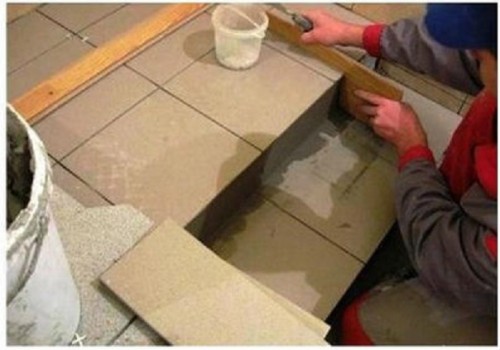
- The edge of the tile should hang 10-15 mm above the base surface. Check the level of the location of the tile.
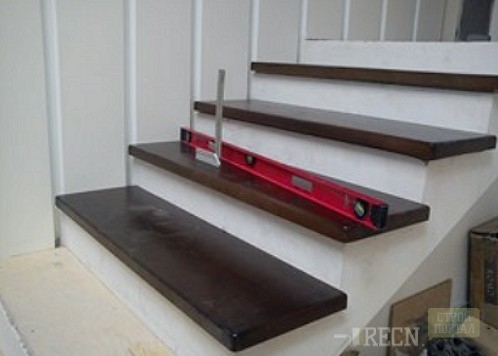
- Apply glue to the opposite side of the opponation. Install it under the protrusion. The edge of the opponation should be located under the tile nap, retreating from it height on the width of the seam.
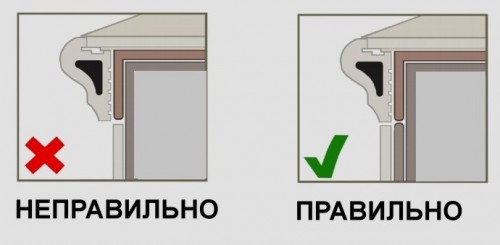
- When laying a tile with a straight edge, use an angular profile.
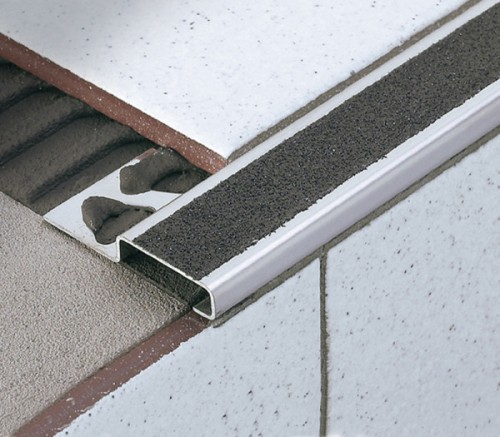
- When finishing a staircase with tiles, use crossbars to get a flat seam between the plates. Recommended seam width 5-8 mm.
- After grazeing the glue, stripping and grouting of the seams and the installation of the plinth is performed. This is done no earlier than 2 days after the installation of porcelain stoneware. Incomplete loads on the steps will lead to their distortion and lagging them from the surface.
- Before grouting seams, carefully remove the remnants of glue. The complexity of the lining facing is that glue from the seams is desirable to remove immediately after it is set. But the inadmissibility of creating a load on the staircase does not allow it to do.




